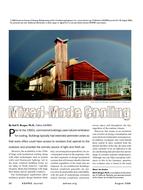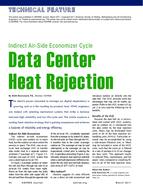Exposure to wood dust has long been suspected of causing a variety of adverse health effects, including dermatitis and allergic respiratory effects. To alleviate this situation, regulations covering permissible wood dust concentration limits in the furniture manufacturing industry have been revised by the Occupational Safety and Health Administration (OSHA). These revised limits imply that most of the wood furniture manufacturers must upgrade their ventilating systems, particularly those who are recirculating the exhaust air from the wood dust filters to the workplace inside the plant. This recirculation of exhaust air is a common practice during winter months, because it is more economical than pre-heating significant quantities of make-up air. However, recirculation generally raises wood dust concentration levels in the workplace beyond the presently recommended limits. In order to meet the new standards, wood furniture manufacturers are either resorting to secondary filtration or, alternatively, stopping recirculation altogether. Deals with the economics of both alternatives and also looks into different options currently available for reducing the dust concentration in the recirculated air.
KEYWORDS: regulations, wood, dust, recirculating, exhaust air ventilation, health, standards, USA, furniture and timber industry, ventilation, air cleaning, economics, costs.
Citation: Symposium Papers, Atlanta, GA, 1990
Product Details
- Published:
- 1990
- Number of Pages:
- 5
- File Size:
- 1 file , 590 KB
- Product Code(s):
- D-18510


